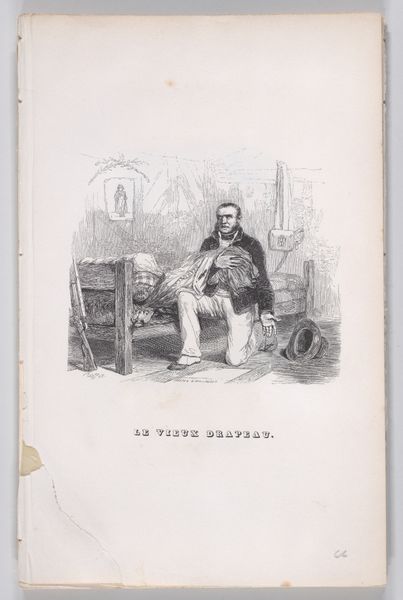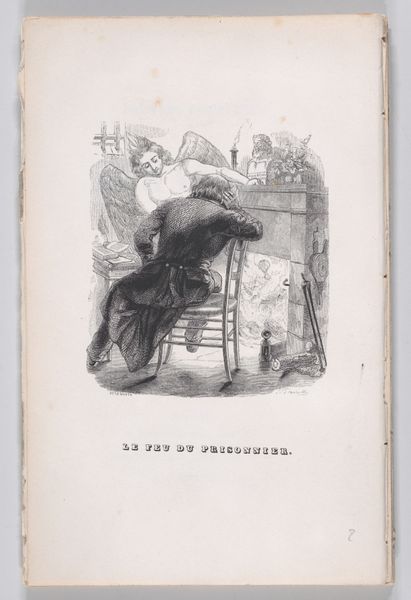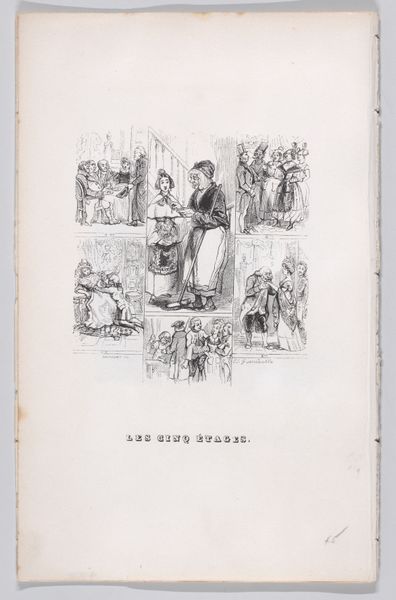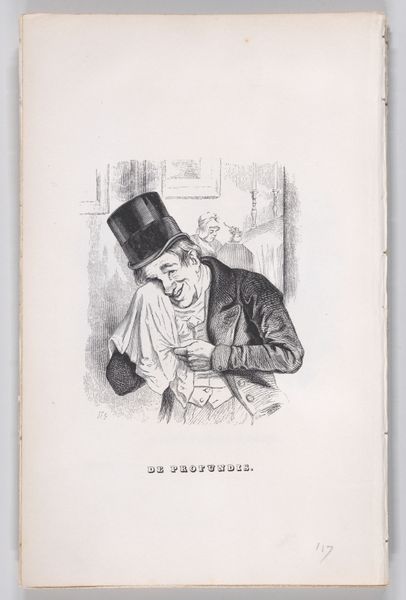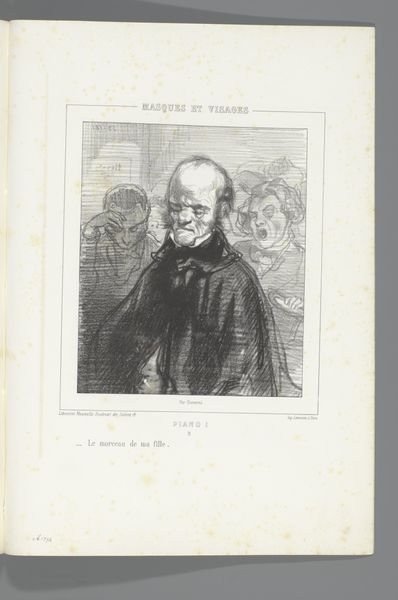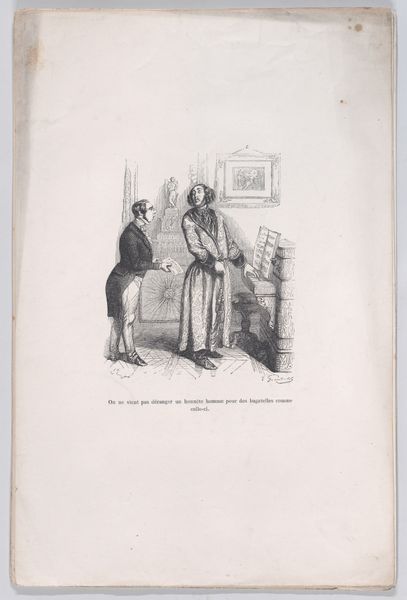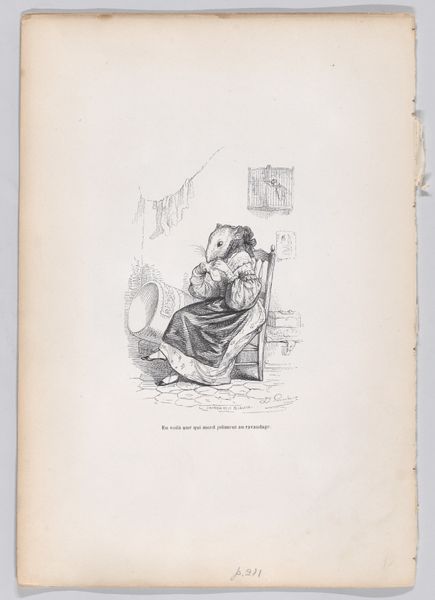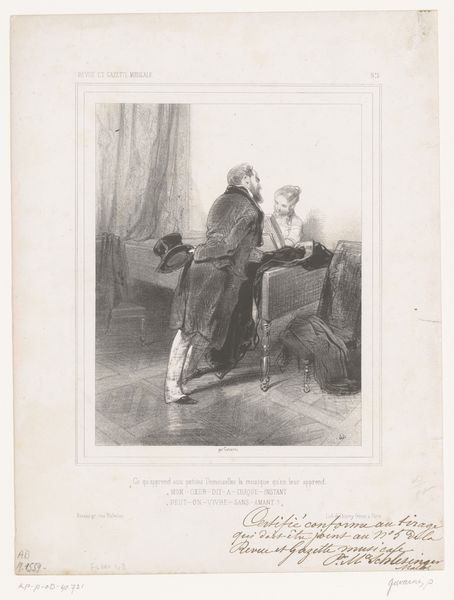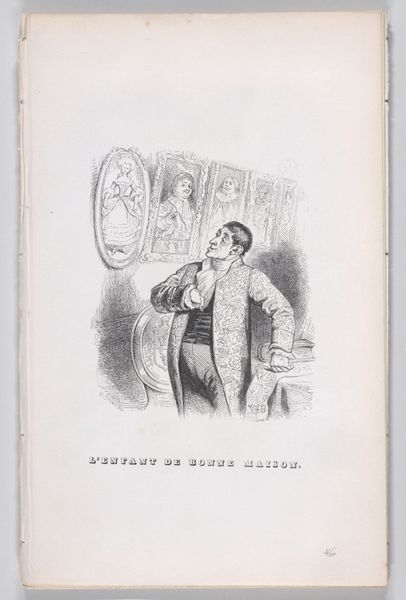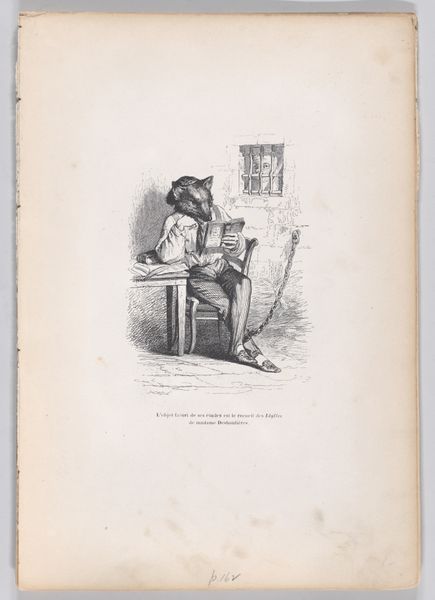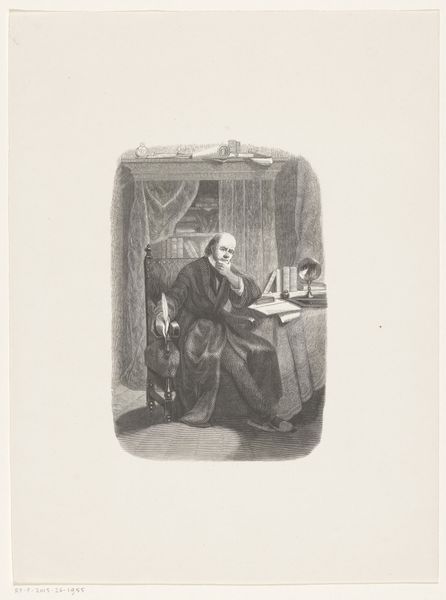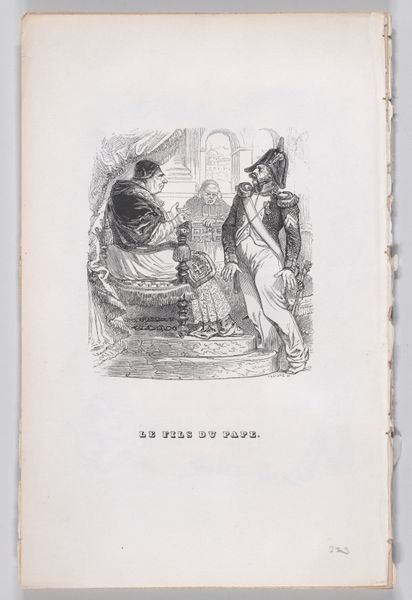
"The Good Old Woman" from The Complete Works of Béranger 1836
0:00
0:00
drawing, print
#
portrait
#
drawing
# print
#
figuration
#
romanticism
#
line
#
genre-painting
Dimensions: Sheet: 8 5/8 × 5 1/2 in. (21.9 × 14 cm)
Copyright: Public Domain
Editor: Here we have J.J. Grandville's print "The Good Old Woman" from 1836. There's something quite poignant about this woman; her stillness contrasts with the dynamism of the Romantic era. How do you interpret this work in relation to its time? Curator: It's crucial to see this image not just as a portrait, but as a representation of aging and the societal roles imposed on women. Consider how Romanticism, while championing individualism, often excluded older women from its narratives of beauty and agency. Grandville presents a counter-narrative, prompting us to question whose stories were being told and whose were being ignored in the dominant culture. Editor: So, are you suggesting this is a commentary on the visibility, or rather, the invisibility, of older women during that time? Curator: Precisely. The seemingly simple image is politically charged. It forces us to acknowledge the complexities of age and gender. What power structures are at play here? And how can we use this piece to spark discussions about representation and equity today? Notice her averted gaze, the way she is holding that book closed; are we seeing imposed isolation and the limitations placed on female expression? Editor: That’s a powerful lens. It makes me consider how historical artworks can still speak to contemporary conversations. I appreciate that it can teach us how to understand art through cultural narratives. Curator: And by viewing it through this activist lens, we give it a renewed voice. Considering the identity and political framework invites us to think deeply about art's ongoing relationship with contemporary society.
Comments
No comments
Be the first to comment and join the conversation on the ultimate creative platform.
